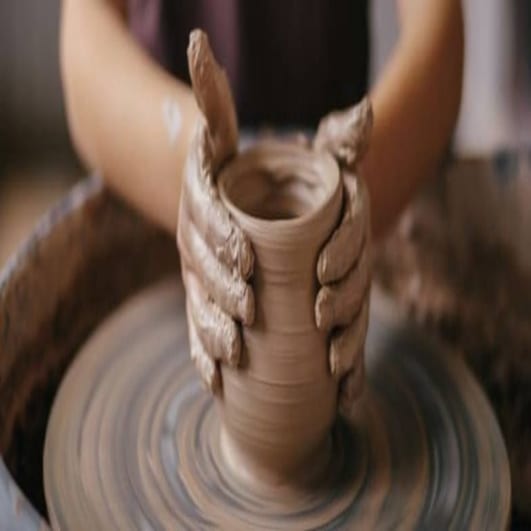Post: Pottery Making

Although the terms pottery and ceramics are often used interchangeably, ceramics refers to a set of more complicated processes that entail multiple firings of the object, more complex enameling, and finer design. 3 Earthenware and terracotta are two other techniques with terms related to pottery and ceramics.
- Very carefully prepare and knead your dough. Wet the dough and continue to knead it even though you can't see any bubbles.
- Apply the remaining water from your sponge after wetting it and draining it to the lathe as it is spinning. This is crucial since it will assist keep the dough from sticking while modeling.
- Place the previously kneaded piece of dough on the lathe's wheel, and then start to knead it by making motions from top to bottom.
- Start rotating and molding the shape of your figure when you see that the dough is adjusting to the movements you made during the previous phase.
- Stop rotating the lathe after your vase is finished, then use the cutting thread to cut the base of the figure and detach it from the machine.
- then slowly take it up and set it aside to dry without digging your fingers too deeply into your body. Three to five days may pass throughout the drying process.
- For the cooking procedure, place your vase in the oven. Keep in mind that clay used for porcelain, stoneware, or refractory needs to be fired between 1250 and 1300 degrees Celsius. Additionally, we advise you to ask your provider how long it should be burnt at what temperature before purchasing your clay.